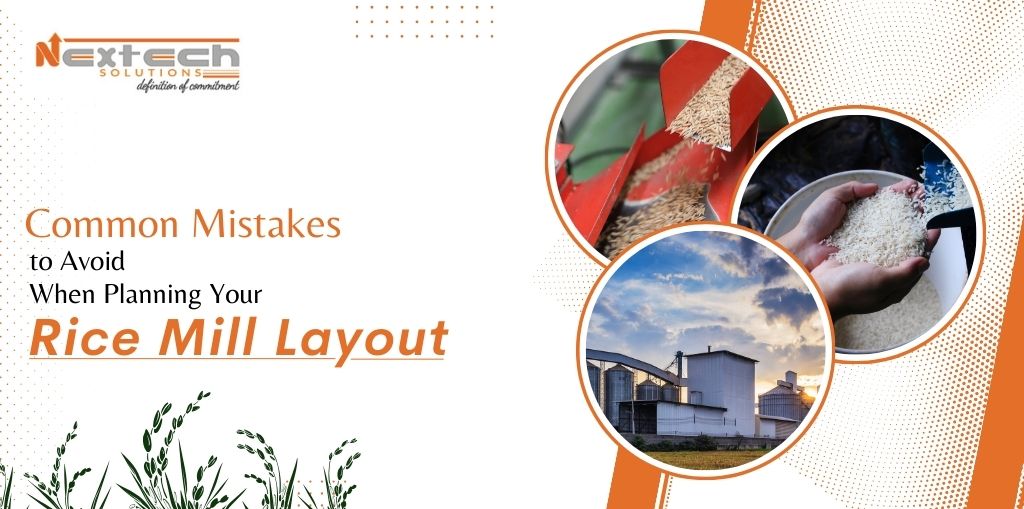A Comprehensive Guide to Avoid Common Mistakes When Planning Your Rice Mill Layout Plant:
Introduction (Rice Mill Layout Plant)
Planning the layout for your rice mill is a crucial step that directly impacts your productivity, efficiency, and overall success in the rice milling business. Avoiding common mistakes in layout planning can save you both time and resources, ultimately leading to a smoother operation and increased profitability. In this guide, we’ll explore the key mistakes to steer clear of when designing your rice mill layout plant, providing you with actionable insights to optimize your setup for success.
Understanding Your Space Requirements
Before delving into the specifics of layout planning, it’s essential to have a clear understanding of your space requirements. Many mill owners make the mistake of underestimating the space needed for various operations, leading to cramped working conditions and inefficient workflow.
When assessing your space requirements, consider factors such as storage space for raw materials and finished products, machinery footprint, and adequate aisle space for movement and maintenance.
Importance of Machinery Placement
Proper placement of machinery is another critical aspect of rice mill layout planning. One common mistake is haphazardly positioning machinery without considering workflow efficiency and safety protocols.
Streamlining Material Flow
Efficient material flow is paramount in rice mill operations to minimize bottlenecks and maximize throughput. However, inadequate planning of material flow pathways can lead to congestion, delays, and unnecessary handling.
Optimizing Worker Ergonomics
Neglecting worker ergonomics is a costly mistake that can result in decreased productivity, increased employee fatigue, and even workplace injuries. When designing your rice mill layout, prioritize ergonomic considerations such as workstation height, equipment accessibility, and workflow ergonomics.
Ensuring Regulatory Compliance
Failure to adhere to regulatory standards and safety guidelines is a significant oversight that can have serious consequences for your rice mill operation.
Implementing Effective Quality Control Measures
Maintaining consistent product quality is essential for customer satisfaction and market competitiveness. However, inadequate quality control measures can lead to product defects, rework, and customer complaints.
Leveraging Technology for Automation
In today’s digital age, leveraging technology for automation is key to staying competitive in the rice milling industry.
Sustainable Practices and Environmental Impact
As sustainability becomes increasingly important in business operations, overlooking environmental considerations can be a costly mistake for rice mill owners.
Common Mistakes to Avoid When Planning Your Rice Mill Layout Plant
Now, let’s delve into the specific mistakes that you should avoid when planning your rice mill layout plant:
Neglecting Space Utilization Optimization
One of the most common mistakes in rice mill layout planning is neglecting to optimize space utilization efficiently.
Disregarding Workflow Efficiency
Another critical mistake is disregarding workflow efficiency when arranging machinery and workstations within the mill.
Ignoring Safety Protocols
Safety should always be a top priority in rice mill operations, yet some mill owners make the mistake of ignoring essential safety protocols.
Overlooking Maintenance Accessibility
Failure to consider maintenance accessibility when designing the layout can lead to costly downtime and repairs.
Underestimating Storage Needs
Underestimating the storage needs for both raw materials and finished products can result in logistical challenges and inventory management issues.
Neglecting Future Expansion
Failing to plan for future expansion can limit your mill’s scalability and hinder long-term growth opportunities.
Frequently Asked Questions (FAQs)
- How can I determine the optimal layout for my rice mill?
Answer: To determine the optimal layout for your rice mill, consider factors such as space constraints, workflow efficiency, machinery placement, and regulatory compliance. Conducting a thorough analysis of your operational requirements and consulting with industry experts can help you design a layout that maximizes productivity and minimizes costs.
- What are some common pitfalls to avoid when planning a rice mill layout?
Answer: Some common pitfalls to avoid include neglecting space utilization optimization, disregarding workflow efficiency, ignoring safety protocols, overlooking maintenance accessibility, underestimating storage needs, and neglecting future expansion considerations.
- Is automation necessary for a rice mill operation?
Answer: While automation can streamline operations and improve efficiency, it’s not always necessary for every rice mill operation. The decision to implement automation should be based on factors such as production volume, labor costs, technological feasibility, and long-term rice mill business goals.
- How can I ensure regulatory compliance in my rice mill layout?
Answer: To ensure regulatory compliance, familiarize yourself with local, national, and international regulations governing rice milling operations. Work closely with regulatory agencies, seek guidance from industry associations, and invest in training and certification programs for your staff.
- What are some cost-effective ways to optimize material flow in a rice mill?
Answer: Some cost-effective ways to optimize material flow include reorganizing workstation layouts for better efficiency, implementing lean manufacturing principles to eliminate waste, investing in modular conveyor systems for flexible material handling, and adopting just-in-time inventory management practices.
- What role does sustainability play in rice mill operations?
Answer: Sustainability plays a crucial role in rice mill operations, encompassing environmental stewardship, resource conservation, and social responsibility. By adopting sustainable practices such as water and energy conservation, waste reduction, and community engagement, rice mill owners can minimize their environmental footprint and contribute to long-term sustainability.
Conclusion
In conclusion, avoiding common mistakes when planning your rice mill layout plant is essential for achieving operational efficiency, productivity, and profitability. By carefully considering space utilization, workflow efficiency, safety protocols, and sustainability practices, you can optimize your rice mill setup for success in the competitive market landscape.
 MAIL US :
MAIL US :
 CALL US :
>
CALL US :
>
